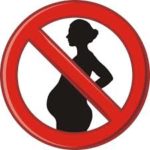 Fibroids are generally benign conditions in women of reproductive age that arise from the smooth muscle cells of the uterus. Although the cause is not well understood, it seems to run in families. By far the commonest tumor of the female genital tract, fibroids are more common than you think and remains the most common indication for surgical removal of the uterus.
Fibroids are generally benign conditions in women of reproductive age that arise from the smooth muscle cells of the uterus. Although the cause is not well understood, it seems to run in families. By far the commonest tumor of the female genital tract, fibroids are more common than you think and remains the most common indication for surgical removal of the uterus.
Risk factors and protective factors
Birth control pills may increase the formation of fibroids in women who are exposed early to birth control pills (between 13-16 years) but generally, protect women from clinically evident fibroids.
Having one or more pregnancies that last greater than 20 weeks will decrease your chance of having fibroids and so will smoking.  Smoking decreases your risk of developing fibroids because smoking reduces estrogen levels. (smoking increases the risk of many other cancers!)
Smoking decreases your risk of developing fibroids because smoking reduces estrogen levels. (smoking increases the risk of many other cancers!)
Women with hypertension are 24% more likely to develop hypertension according to some studies.
Similarly, pelvic infection that affects the uterus may increase your chances of developing fibroids, however, sexually transmitted diseases that affect only the external genitalia like genital warts and herpes do not cause fibroids.
Diet has also been implicated positively and negatively. Consumption of green vegetables reduces the risk of developing fibroids, while increased consumption of red meat increases your chance of developing fibroids.
Symptoms/Signs to watch out for-

Most people with fibroids don’t even know they have it. Many women with ‘big tummies’ despite diet and exercise probably have fibroids.
For those with symptoms, increased and or heavy bleeding during periods is a typical symptom.
A feeling of pressure or pain in the pelvic area is another common complaint. This is usually due to the weight or location of the fibroid.
Pelvic pain is another common presentation as well as painful menstruation. Pain in back or legs and pain during sex are also common in women with fibroids.
Fibroids are associated with subfertility and adverse pregnancy outcomes. Women with fibroids are likely to have a higher risk of abnormal placental implantation during pregnancy and have small babies due to intra-uterine growth retardation.
Pregnant women with fibroids may also develop premature labor, premature rupture of membranes, miscarriage, first trimester bleeding and delivery by C-section.
Diagnosing Fibroids
If you have the symptoms or signs described earlier, your doctor is likely to examine your uterus and send you for an ultrasound scan in order to make a diagnosis.
Treating Fibroids
In asymptomatic women, it is appropriate to ‘do nothing’ and come for regular follow-ups.
For women with symptoms, the options are either medical or surgical and depends on whether fertility is desired or not.
 The medical treatment option is not so popular probably because of the side effects.
The medical treatment option is not so popular probably because of the side effects.
The surgical treatment option, however, remains the mainstay of treating uterine fibroids.
Myomectomy is the removal of the fibroid tissue. This is not the best treatment option for women with fibroids as the fibroids often grow back and usually more and bigger when they do. This is an option for those who desire pregnancy.
Hysterectomy is the removal of the uterus and a cure for fibroids. It can be done surgically or via laparoscopy.
Uterine Artery Embolization (UAE) is an alternative to hysterectomy or myomectomy especially in women who are premenopausal. The blood flow to the uterus is blocked and this leads to an improvement in the amount of blood flow during periods, the size of the uterus, and menstrual pain.
Way forward with fibroids without treatment.
It often shrinks after menopause and DOES NOT increase the risk of developing uterine cancer. However, if it occurs in a post-menopausal woman, there is a need to monitor the fibroids for any rapid increase in size.
It is always a good idea to check these things out. Good luck!